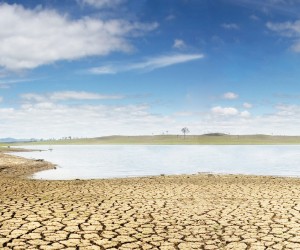With increased concern surrounding the planet’s environmental state and especially global warming, an emphasis is being placed on sustainability. No more so than the topic of Water Sustainability. Recent droughts in South Africa has led to a major depletion of surface water resources with rainfall being at one of its lowest volumes since the start of rainfall records in 1904.
Nationwide dam levels have dropped well below the 50% mark with the major water supply resources such as the Gariep Dam and Vaal Dam going well below this mark. The Vaal dam only increased to levels above 50% in January 2017 with the Gariep dam reported (DWA, 2017) to be still below the half way mark in mid-January.The mining sector in South Africa uses approximately 2.5% of the national water supply and uses this water to directly contribute 8.8% of the country’s GDP (Scott, 2014). The mining industry relies on water for all processes and water security has become an even greater challenge in the last year.However, with the increased water shortage mining industries across southern Africa have stepped up and increased efforts for water conservation to insure sustainable use. In depth studies of water re-use, passive treatments, sustainable well field development and mitigation of pollution sources have increased.
Water scarcity is an unparalleled challenge especially to the mining industry of southern Africa. Most of the region is semi-arid to arid with low rainfall. Mining often has a negative impact on water resources and the sustainability of these natural resources. Recently various mining companies have joined drives and organisation to report and decrease their footprint and impact on the environment.An example of this is the Carbon Disclosure Project (CDP) that is a global disclosure project that encourages companies, cities, states and regions to measure and manage their environmental impacts through this reporting system.Recently an announcement was made in which leaders in the mining industry committed to a new water stewardship.
A binding position statement was undertaken by 23 of the world’s largest mining companies and members of the International Council on Mining and Metals (ICMM).The statement binds the members to apply strong and transparent water governance including robust public reporting; manage water at operations effectively; and collaborate to achieve responsible and sustainable water use.Water sustainability in the mining sector directly speaks to the effective management of the water footprint. The water footprint or the total volume of freshwater that is used to produce the goods and services consumed by the individual, community or produced by the business (“Sustainable Water: The concept of Water Footprint,” 2016) is a concept that needs to be understood and used more widely if the sustainable water use in mining is to be achieved.
According to UN reports industrial water use, including mining is the second largest water consumer globally. Although mines should step up their role on the sustainability and security of water resources and the supply thereof it should be understood that the use of water by mines is essential in the process to provide materials to the consumer. Water is used throughout the beneficiation process and in recent years the sustainable use of water by mines has evolved. New processing methods and water management tools have decreased the amount of fresh water (such as rainwater, groundwater rivers and dams) used by mines and the mitigation of any potential impacts have improved. A good case study would be a gold mine in Africa where Digby Wells was involved in achieving improved water sustainability through the use of a water balance that incorporated site-wide climatic conditions, process plant water circuits and other sinks within the mine.
However, even more emphasis should be applied on improvement and sustainable water use in the mining industry. This can be and has been achieved in the past through:
- Good storm water and dirty water management;
- Site wide water and salt balances;
- Improvements in liners system applied to waste facilities;
- Passive and active treatments like artificial wetlands and dedicated treatment plants;
- Better and more efficient dust suppression systems using less water;
- Processing methodologies using little to no water; and
- Re-use and treatment of water.
With scientists not predicting a pleasant future with regards to rainfall and temperatures it is clear that all sectors of society needs to work toward more sustainable and environmentally friendly use of our water resources. The mining industry, especially in southern Africa, can lead the way with new methodologies and processes applied to the management of both clean and dirty water. This will show the way towards a sustainable water management for all industries across the globe.






